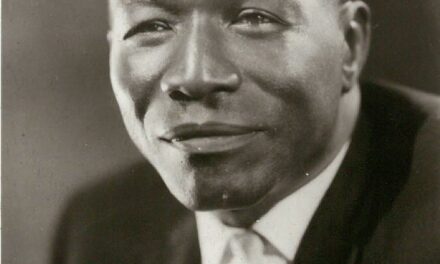In a previous academic life, I was trained as an historian and archaeologist, particularly regarding representation of heritage. While this has proved unexpectedly good training for eventually becoming a media theorist studying representation (amongst other things), it also means I often have a somewhat ambivalent relationship with documentaries about history, archaeology and/or culture. So it was when I and my scholarly baggage stumbled across the wondrously, subversively educational Philomena Cunk and her multiple series of Cunk on…[Place].
For those unfamiliar with the series (hyperdiegesis?); Philomena Cunk (Diane Morgan) was introduced in Charlie Brooker’s Weekly Wipe (BBC 2013-2015) as a ‘media absorbist’ commenting on various texts. Brassett and Sutton (2017) note that
By placing the viewer at the centre of the satire, there is a challenge to think through how politics works, where opinions come from, and how they are disciplined. …our account…offers a view of Brooker urging viewers to deconstruct that illusory division between audience and media, as well as that division between politics and everything else. On this view, it can be argued that the person who watches Charlie Brooker is performatively inscribed as both the recipient and the instigator of the satire. Beyond questions of getting the joke or not, liking it, or not, a performative instability is presented at the centre: how do we come to know politics? (Brassett and Sutton 2017: 257).
She eventually was made host of a series of shorts within Weekly Wipe called Moments of Wonder and then made the leap to ‘documentary’ host with Cunk on Shakespeare (BBC 2016), Cunk on Britain (BBC 2016-2018), Cunk on Earth (BBC/Netflix 2022) and Cunk on Life (BBC/Netflix 2024). These mockumentaries feature Cunk travelling, interviewing experts who are in on the joke and who often explain difficult concepts and aspects of history or culture to her as though she were a child.[i]
Mockumentaries tend to mimic and subvert the tropes of the documentaries that they are satirising, but in the case of the Cunk on… series, this subversion functions in way beyond simply breaking the fourth wall and reminding the audience that they are watching a construction.[ii] One of the main tenets of historiography is that history is, itself, a construction which can includes the biases and assumptions of those engaged in the construction (cf Edgerton 2020 on collective memory and representations of history). This postmodern breaking of not only the fourth wall but of any pretence of an objective history can also be read in the various series’ choice of touchstone events. While such events are normally chosen as they are believed to be commonly known (e.g., comparing the time or place where something occurs with the Roman Empire or with World War II), the series instead choose two specific examples. In Cunk on Britain, events are often characterised by their temporal relationship to the premiere of the BBC series Brush Strokes (1986-1991) whereas in subsequent series events are characterised by their temporal relationship to what is repeatedly described as ‘Belgian techno anthem “Pump up the Jam”’ from 1990. In addition to no doubt providing these older texts with a bit of advertising, the choices also function in two other ways. First of all, the seemingly random choices satirise and illustrate the arbitrariness of the touchstone events that are often used. Mesoamerican civilisations were unaware of the Romans during the Roman Empire, so the only reason such a temporal comparison would be brought up in a documentary would be because of Eurocentrism. Secondly, the series illustrates that popular culture is not only just as recognisable to an audience but its use in the mockumentary also allows the audience to question why popular culture is not examined in historical documentaries in the same way as other aspects of history. Though Cunk does do this with regard to major musical acts (e.g., Elvis, the Beatles and the Rolling Stones) even her mockumentaries do not cover texts that are just as popular but are, for whatever reason, not considered to be ‘classic’, or to have the same level of cultural capital. Because of the context, however, she encourages us to wonder why that might be.
Between Cunk’s subjects and her innocently ignorant questions, she illustrates to her audience just how much of a construction history is and how much conjecture is present in STEM fields. Yet because her ignorance allows her experts to explain in-depth, those structuring absences are presented not as subverting expertise but in illustrating that absolute certainty in or about any field is a sign of a lack of understanding. In this one can read something analogous to Kilby’s (2018) findings on political satire, in that the Cunk mockumentaries are ‘…adopting solution and motivation building frames associated with advocacy journalism in an attempt to encourage audiences to engage with traditional forms of civic participation’ (Kilby 2018: 1934). In combination with the postmodernity of Cunk’s breaking of the fourth wall, this also encourages the challenging of history and its uses by those in power. As Brassett and Sutton (2017) note, this reinforces for the viewer that history and politics are inextricably bound. Yet Cunk’s innocent ignorance also allows for the satirisation and debunking of misinformation. Her sources for the unusual opinions or arguments she holds generally come from YouTube (the moon not being real) or, more commonly ‘my mate Paul,’ which can be read as an example of the (misplaced) ‘appeal to authority’ fallacy. That such misinformation is immediately corrected by the expert she is interviewing at the time prevents such a fallacy from negatively impacting overall institutional trust in science or social science, however.
Philomena Cunk started her (diegetic) life as a media consumer, then, like so many before her, became a media producer who brought her knowledge of popular culture to the documentary form. Like those in many of Brooker’s works, she is both the addresser and addressed, satiriser and satirised. Yet there is no conflict between the subject positions, as audiences can switch easily between the expert with knowledge, the learner who seeks it and the viewer who is amused by both. This allows for a greater understanding and willingness to understand all the threads that mockumentary and satire can teach us about the connections between history, politics, science and power. And, as Cunk so often shows us about the current cultural moment, we all still have a lot to learn.
Dr Melissa Beattie is a recovering Classicist who was awarded a PhD in Theatre, Film and TV Studies from Aberystwyth University where she studied Torchwood and national identity through fan/audience research as well as textual analysis. She has published and presented several papers relating to transnational television, audience research and/or national identity. She is currently an independent scholar. She is under contract with Lexington/Bloomsbury for an academic book on fictitious countries and Palgrave for a book on Canadian crime dramas. She has previously worked at universities in the US, Korea, Pakistan, Armenia, Ethiopia, Cambodia and Morocco. She can be contacted at tritogeneia@aol.com .
References
Brassett J and Sutton A (2017) British satire, everyday politics: Chris Morris, Armando Iannucci and Charlie Brooker. The British Journal of Politics and International Relations 19(2): 245-262.
Edgerton G R (2020) The past is now present onscreen: Television, history, and collective memory. In Wasko J and Meehan ER (eds). A Companion to Television 2nd Ed. Chichester: Wiley Blackwell, pp. 79-104.
Kilby A (2018) Provoking the citizen. Journalism Studies 19(13): 1934-1944.
Footnotes
[i] While one could perhaps view this as infantilising a female character, I would argue that it instead allows for adult viewers to be simultaneously educated and entertained without making the audience feel ignorant for not knowing or understanding a concept.
[ii] As part of my MA programme I did a work experience placement on an episode of Time Team (Channel 4/YouTube 1994-present). We ‘found’ an artefact three times; the first was the initial discovery, at which point the camera and sound operators were called to film ‘finding’ it for the second time. There was a problem with that take, however, so the artefact was ‘discovered’ for a third and final time.




Whoever you are, you are a genius
best
S
You are incredibly kind to say so! <3